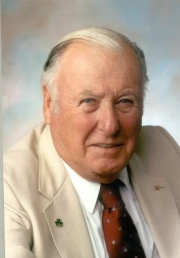-
(b.) - ?1926
Bio/Description
An American mathematician, he was born and raised in New York City. After serving in the Army Air Corps, he earned a B.A. degree in Math in 1949 from Manhattan College, Bronx, NY. He received his M.A. degree in 1951and his Ph.D. degree in 1961; both in Applied Mathematics from Columbia University, New York, NY. He was a programmer on John von Neumann's computer at the Institute for Advanced Study, Princeton, NJ, from 1953 to 1956. He worked on quantum mechanical computations at the Courant Institute, New York University, from 1956 to 1962, when he joined the Research Staff at the IBM Watson Research Center, Yorktown Heights, NY. Upon retirement from IBM in 1991, he joined the Department of Electrical Engineering, University of Rhode Island, Kingston, where he served on the faculty of the computer engineering program. His most significant contribution to the world of mathematics and digital signal processing is the Fast Fourier transform, which he co-developed with John Tukey while working for the research division of IBM in 1965. A fast Fourier transform (FFT) is an algorithm to compute the discrete Fourier transform (DFT) and its inverse. Fourier analysis converts time (or space) to frequency and vice versa; an FFT rapidly computes such transformations by factorizing the DFT matrix into a product of sparse (mostly zero) factors. As a result, fast Fourier transforms are widely used for many applications in engineering, science, and mathematics. The basic ideas were popularized in 1965, but some FFTs had been previously known as early as 1805. In 1994 Gilbert Strang described the Fast Fourier transform as "the most important numerical algorithm of our lifetime". The motivation for it was provided by Dr. Richard L. Garwin at IBM Watson Research who was concerned about verifying a Nuclear arms treaty with the Soviet Union for the SALT talks. Garwin thought that if he had a very much faster Fourier Transform he could plant sensors in the ground in countries surrounding the Soviet Union. He suggested the idea of how Fourier transforms could be programmed to be much faster to both Cooley and Tukey. They did the work, the sensors were planted, and he was able to locate nuclear explosions to within 15 kilometers of where they were occurring. He was a member of the Digital Signal Processing Committee of the IEEE, and was later awarded a fellowship of IEEE for his work on FFT. In 2002 he received the IEEE Jack S. Kilby Signal Processing Medal. He considerably contributed to the establishing of terminology in digital signal processing. He is the author or co-author of such publications as: "An algorithm for the machine calculation of complex Fourier series", with John W. Tukey (1965): Math. Comput. 19, 297?301; with Timothy M. Toolan and Donald W. Tufts. "A Subspace Tracking Algorithm Using the Fast Fourier Transform." IEEE Signal Processing Letters. 11(1):30-32. January 2004; with Edward C. Real and Donald W. Tufts, "Two Algorithms for Fast Approximate Subspace Tracking" IEEE Transactions on Signal Processing, 47(7):1936-1945. July 1999; and with D. W. Tufts and Edward C. Real, "Fast Approximate Subspace Tracking (FAST)." IN: Proceedings of the 1997 IEEE International Conference on Acoustics, Speech, and Signal Processing. IEEE. 1997. I:547-550.
-
Date of Birth:
1926 -
Noted For:
Co-developer of the Fast Fourier transform, an algorithm to compute the discrete Fourier transform (DFT) and its inverse -
Category of Achievement:
-
More Info:


